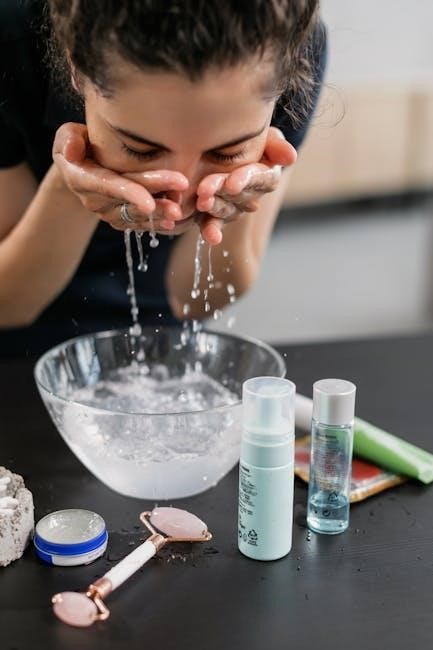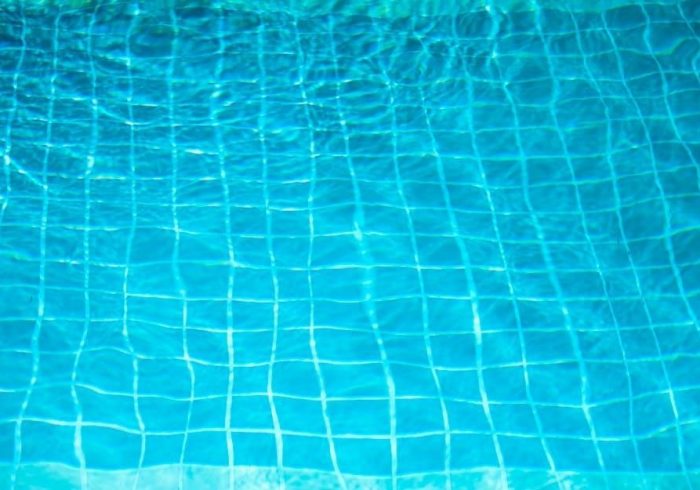Minky fabric is a luxurious, soft, and plush material, often used in blankets, baby items, and home decor․ Known for its velvety texture, it requires gentle care to maintain its softness and appearance․ Proper washing techniques are essential to preserve its quality and ensure longevity․
What is Minky Fabric?
Minky fabric is a soft, plush, and luxurious material known for its velvety texture, often compared to mink fur․ Typically made from 100% polyester, it features a smooth, gentle feel that makes it ideal for baby blankets, throws, and stuffed animals․ The fabric is durable yet lightweight, with a unique texture that may include patterns like dots or stripes․ Its synthetic composition allows for easy care, but it requires specific washing techniques to maintain its softness and appearance․ Minky fabric is a popular choice for crafting and home decor due to its cozy, high-quality feel․
Popular Uses of Minky Fabric
Minky fabric is widely used for creating soft, cozy baby blankets, lovies, and stuffed animals due to its gentle texture․ It’s also popular in home decor for throws, pillow covers, and upholstery․ Crafters favor minky for DIY projects like quilts, clothing, and accessories․ Its plush feel makes it ideal for baby items, while its durability suits everyday use․ Minky is also used in pet products and luxury garments, offering both comfort and style․ Its versatility and softness make it a favorite for both practical and decorative purposes, ensuring it remains a top choice for crafters and consumers alike․
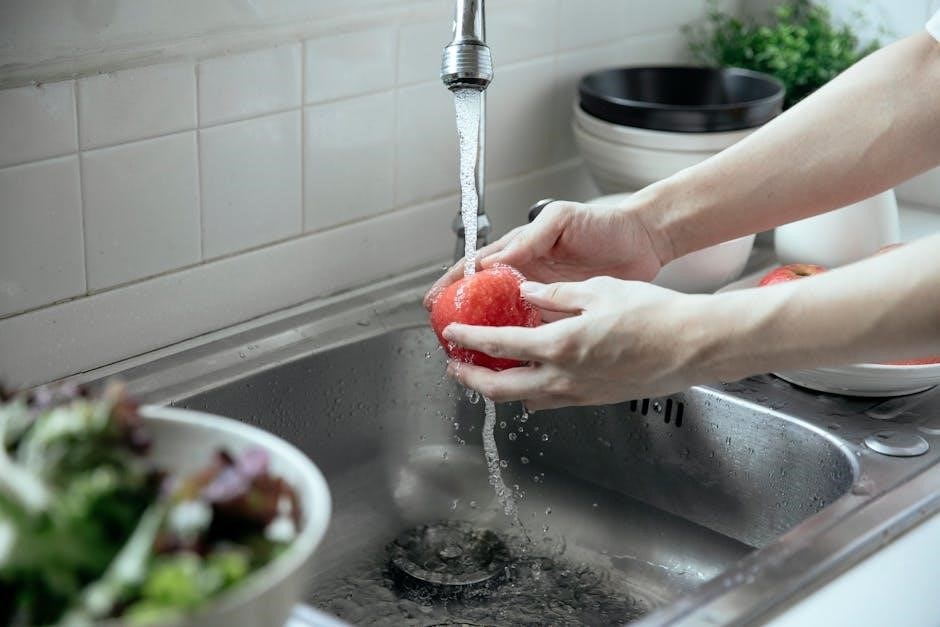
General Washing Instructions for Minky Fabric
Minky fabric requires gentle care․ Wash in cold water using a mild detergent․ Avoid fabric softeners and bleach․ Use a delicate cycle and air dry to maintain softness․
Check the Care Label First
Before washing your minky fabric, always check the care label for specific instructions․ While most minky fabrics can be machine washed in cold water, some may require hand washing or special treatments․ The care label will provide guidance tailored to the fabric’s unique needs․ Ignoring these instructions could damage the material or reduce its softness․ Even if the label recommends machine washing, ensure you follow the suggested cycle and temperature settings․ This step is crucial to maintaining the fabric’s plush texture and ensuring it remains soft and luxurious for years to come․
Machine Washing vs․ Hand Washing
Machine washing is generally suitable for minky fabric, but it requires a gentle cycle with cold water to prevent damage․ Hand washing is recommended for delicate or heavily soiled items, as it allows for a more controlled cleaning process․ When machine washing, use a mild detergent and avoid fabric softeners to maintain the fabric’s softness․ For hand washing, gently agitate the water with your hands and avoid scrubbing, as this can damage the plush fibers․ Both methods should be done carefully to preserve the fabric’s texture and ensure it remains soft and luxurious after cleaning․
Recommended Water Temperature
When washing minky fabric, it is crucial to use cold water to preserve its softness and texture․ Cold water prevents the fibers from matting or losing their plushness․ Hot water can damage the fabric, causing it to shrink or become less soft over time․ Always select the coldest setting on your washing machine to ensure the fabric remains in optimal condition․ Avoid using warm or hot water, as heat can irreparably harm the delicate fibers․ Cold water is essential for maintaining the luxurious feel and longevity of minky fabric․
Choosing the Right Detergent
Choosing the right detergent is crucial for maintaining the softness of minky fabric․ Use a mild, dye-free detergent designed for delicate or sensitive fabrics․ Avoid harsh chemicals, bleach, or fabric softeners, as they can leave residues that reduce plushness and damage the fabric over time․ Eco-friendly or sensitive skin detergents are ideal for their gentleness and lack of harmful additives․ Using the right detergent ensures your minky fabric remains soft, vibrant, and luxurious after each wash․ Always check the label to ensure suitability for delicate materials․
Preparing Minky Items for Washing
Before washing, sort minky items separately and inspect for loose debris․ Use a gentle detergent and avoid fabric softeners to preserve softness․ Handle with care to prevent damage․
Sorting and Separating Minky Items
Sorting and separating minky items before washing is crucial to maintain their softness and texture․ Always check the care label for specific instructions․ Wash minky items separately from other fabrics to prevent damage or snagging․ Use a mesh laundry bag for extra protection during the wash cycle․ Avoid mixing minky with rough or heavy fabrics, as this can cause friction and wear․ Separate light and dark colors to prevent dye transfer․ Never use fabric softeners, as they can coat the fibers and reduce softness․ Opt for mild, dye-free detergents to preserve the fabric’s plushness․ Proper sorting ensures gentle cleaning and longevity․
Pre-Treating Stains on Minky Fabric
For best results, treat stains on minky fabric before washing․ Gently blot the stain with a clean cloth to remove excess dirt․ Avoid rubbing, as this can damage the plush texture․ Apply a small amount of mild detergent or a solution of equal parts water and white vinegar directly to the stain․ Let it sit for 10–15 minutes to help lift the stain․ Do not use harsh chemicals or bleach, as they can harm the fabric․ Rinse gently with cold water before machine washing․ Avoid soaking minky fabric, as it may affect its softness․ Air dry after treatment for optimal results․
Removing Loose Debris
Before washing, gently remove loose debris from minky fabric to prevent damage or matting․ Shake the item outdoors or use a lint roller to capture loose fibers and dirt․ For stubborn particles, lightly brush the fabric with a soft-bristle brush or a clean, dry sponge․ Avoid using adhesive rollers or harsh tools, as they may pull fibers or leave residue․ If using a vacuum, ensure it has no brush or beater bar to prevent snagging․ This step ensures the fabric remains plush and prevents clogging your washing machine․ Always handle minky fabric with care to maintain its softness and texture․
Machine Washing Minky Blankets
Machine washing minky blankets is possible with care․ Use cold water, a gentle cycle, and mild detergent․ Avoid fabric softeners to prevent residue buildup․ Wash separately to protect the fabric’s plush texture․
Using a Gentle Cycle
Using a gentle cycle is crucial when washing minky fabric to preserve its softness and texture․ Regular wash cycles can damage the delicate fibers, causing them to lose their plush feel․ Always select a cold water setting and use a mild detergent specifically designed for delicate fabrics; Avoid fabric softeners, as they can leave a residue that reduces softness․ Place the minky item in a mesh laundry bag for extra protection․ Washing minky separately from other items ensures optimal care and maintains its luxurious quality․
Why Cold Water is Essential
Cold water is essential for washing minky fabric to prevent damage to its fibers․ Hot water can cause the fabric to lose its plush texture and become stiff or discolored․ Cold water preserves the softness and maintains the integrity of the minky fibers, ensuring they remain luxurious and gentle on the skin․ Additionally, cold water helps prevent shrinkage and color fading, keeping your minky items looking and feeling their best․ Always use cold water to protect your minky fabric and extend its lifespan․
Adding Mild Detergent
When washing minky fabric, it’s crucial to use a mild detergent to preserve its softness and texture․ Avoid harsh detergents, bleach, or fabric softeners, as they can leave residues that damage the fabric․ Opt for a dye-free, gentle detergent that won’t cling to the fibers․ This ensures the minky remains plush and prevents discoloration․ Mild detergents are often labeled as eco-friendly or suitable for sensitive skin, making them ideal for minky care․ Avoiding heavy chemicals will help maintain the fabric’s luxurious feel and extend its lifespan․
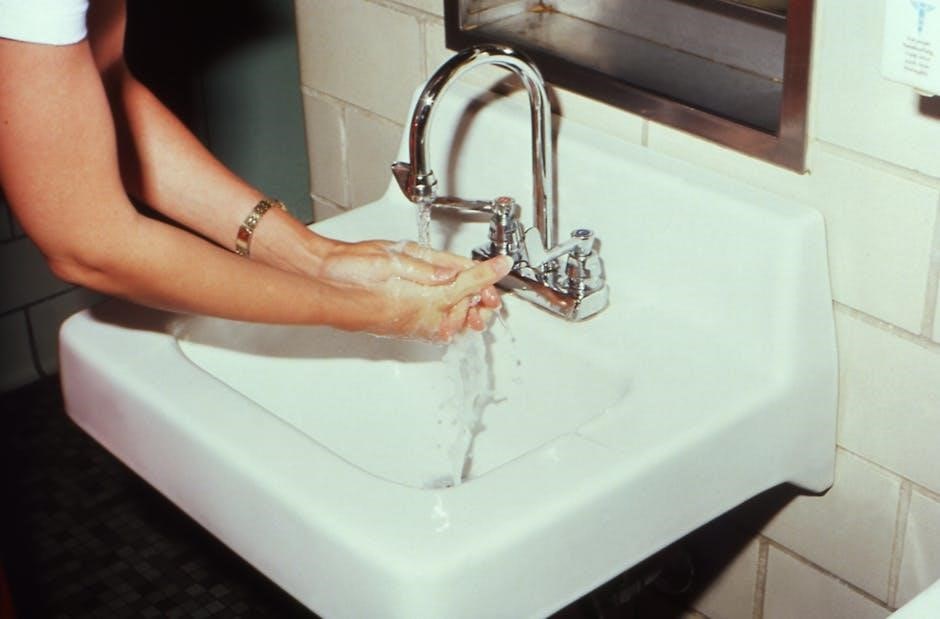
Drying Minky Blankets
Air drying is recommended to maintain softness․ If using a dryer, select no-heat settings to prevent damage․ Fabric softeners should be avoided to preserve plushness․
Air Drying: The Preferred Method
Air drying is the best way to preserve the softness and plushness of minky blankets․ Lay the blanket flat on a clean, dry surface or hang it over a sturdy clothesline, ensuring it is evenly spread․ Direct sunlight should be avoided, as it can cause fading or damage․ Allow the blanket to air dry completely, which may take longer but ensures no heat damage․ This method prevents matting of the fibers and maintains the fabric’s luxurious feel․ Patience is key, as natural drying ensures your minky blanket remains soft and cozy for years to come․
Using a Dryer: No Heat Settings
While air drying is preferred, using a dryer is possible if done carefully․ Always use a no-heat setting or the air-fluff cycle to prevent damage․ High heat can melt fibers, reducing softness and causing matting․ Place the minky blanket in the dryer alone to avoid friction and abrasion․ Remove it as soon as the cycle ends to prevent wrinkles․ Never use dryer sheets, as they can leave a residue that dulls the fabric․ If you must use a dryer, ensure it’s on the lowest setting to maintain the blanket’s plush texture and longevity․
Hanging vs․ Laying Flat to Dry
When drying a minky blanket, choose between hanging or laying it flat․ Hanging allows air to circulate freely, preventing moisture buildup and maintaining shape․ Use a sturdy, wide hanger to avoid stretching․ Laying flat on a clean, dry surface is ideal for preserving texture and preventing creases․ Avoid direct sunlight, as it may fade colors․ Both methods ensure the fabric remains soft and plush․ Never fold or stack wet minky items, as this can cause fibers to mat․ Proper drying techniques are crucial for maintaining the blanket’s original quality and appearance․
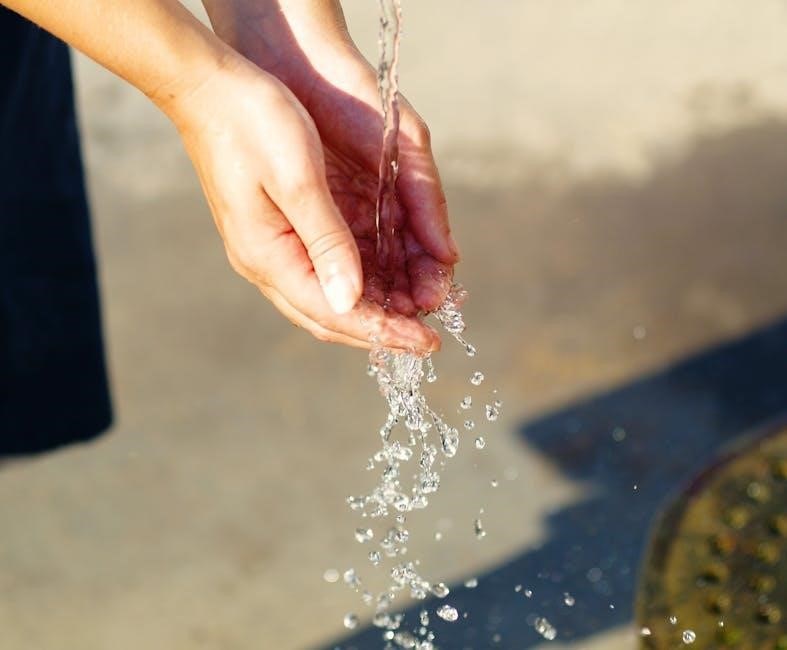
Caring for Minky Fabric
Minky fabric requires gentle care to maintain its softness and plush texture․ Wash in cold water with mild detergent, avoid fabric softeners, and air-dry to preserve its quality․
Why Fabric Softeners Should Be Avoided
Fabric softeners should never be used on minky fabric, as they leave a residue that coats the fibers, reducing their softness and plushness over time․ This residue can also attract dirt and make the fabric feel stiff or gummy․ Additionally, fabric softeners can interfere with the fabric’s breathability and natural texture․ To maintain the luxurious feel of minky, it’s best to avoid fabric softeners entirely and opt for mild, dye-free detergents instead․ This ensures the fabric remains soft, clean, and retains its signature velvety texture for years to come․
Never Use Bleach or Harsh Chemicals
Bleach and harsh chemicals should never be used on minky fabric, as they can damage the delicate fibers and cause irreversible harm․ Bleach can break down the fabric’s structure, leading to discoloration and loss of softness․ Harsh chemicals, including strong detergents, can leave residues that affect the fabric’s texture and appearance․ These chemicals can also weaken the fibers over time, making the fabric more prone to wear and tear․ To preserve the integrity and plushness of minky fabric, it’s essential to stick to mild, gentle cleaning products that are free from harsh additives․
Avoiding Direct Sunlight for Drying
Drying minky fabric in direct sunlight is not recommended, as prolonged exposure can cause fading and discoloration․ The intense heat and UV rays can also weaken the fibers and make the fabric less soft․ Instead, opt for air drying in a shaded area or using a dryer on a no-heat setting․ This ensures the fabric retains its vibrant colors and plush texture; Proper drying methods are crucial to maintaining the quality and appearance of minky items, ensuring they remain soft and luxurious for years to come․
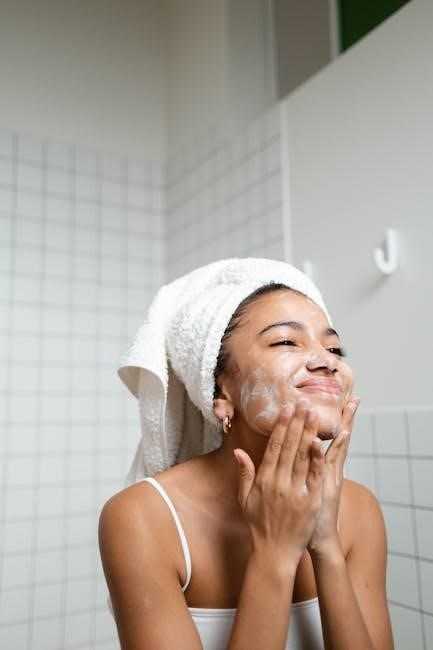
Special Tips for Maintaining Softness
Brushing minky fabric gently restores its plush texture․ Fluffing after washing prevents matting and enhances softness․ Proper storage in a cool, dry place maintains its luxurious feel․
Brushing Minky Fabric
Brushing minky fabric is a simple yet effective way to maintain its softness and texture․ Use a soft-bristle brush or a velvet brush to gently glide over the fabric, restoring its plushness․ This process helps prevent matting and keeps the fibers lifted, ensuring the fabric remains luxurious․ Brushing before washing can remove loose debris, while brushing after drying enhances the fabric’s natural texture․ Avoid using harsh tools, as they may damage the delicate fibers․ Regular brushing is a key step in preserving the soft, velvety feel of minky fabric, keeping it looking and feeling its best․
Fluffing the Fabric After Washing
Fluffing minky fabric after washing is crucial to restore its softness and texture․ Gently shake the fabric or use your hands to loosen and redistribute the fibers․ For best results, air dry or tumble dry on a no-heat setting to naturally fluff the fabric․ Avoid high heat, as it can damage the fibers and reduce plushness․ Regular fluffing prevents matting and ensures the fabric remains soft and luxurious; This simple step helps maintain the fabric’s original texture, keeping it cozy and comfortable for years to come․ Proper fluffing is essential for preserving the unique feel of minky fabric․
Storing Minky Blankets Properly
To maintain the softness and plush texture of minky blankets, proper storage is essential․ Always ensure the blanket is clean and dry before storing to prevent mildew or odor buildup․ Fold or roll the blanket neatly to avoid creases, and place it in a breathable, moisture-free environment․ Avoid storing in direct sunlight, as it can fade the colors․ Use a fabric storage bag or a clean, dry container to protect from dust․ Never compress or stack heavily, as this can flatten the fabric․ Proper storage preserves the blanket’s luxurious feel and appearance for years to come․
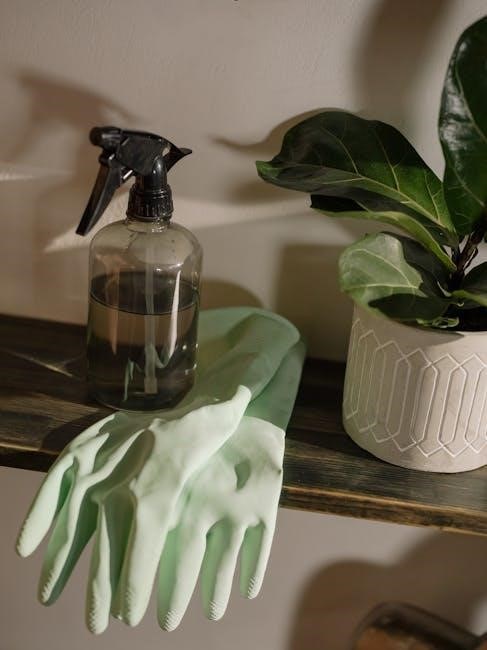
Common Mistakes to Avoid
Common mistakes include using hot water, harsh detergents, or fabric softeners, which can damage minky fabric․ Avoid high heat in dryers and over-drying, as it can flatten the plush texture;
Using Hot Water
Using hot water when washing minky fabric is a common mistake that can damage its soft, plush texture․ Hot water can cause the fibers to mat or tangle, reducing the fabric’s loft and softness․ It may also lead to shrinkage or color bleeding, especially in vibrant or printed minky fabrics․ Hot water can set stains instead of removing them, making the fabric less plush over time․ Always opt for cold water to preserve the texture and maintain the luxurious feel of minky fabric․
Adding Fabric Softener
Fabric softeners should never be used when washing minky fabric․ These products coat the fibers with a residue, which can make the fabric feel stiff and less plush over time․ This residue also reduces the breathability of the material, leading to a gummy texture that detracts from its softness․ Additionally, fabric softeners can interfere with the natural texture of minky, causing it to lose its velvety feel․ To maintain the luxurious quality of minky fabric, it’s crucial to avoid fabric softeners and opt for mild detergents instead․
Using High Heat in the Dryer
Using high heat in the dryer is highly discouraged when caring for minky fabric․ Heat can damage the delicate fibers, causing them to melt or stick together, which irreparably ruins the softness and plush texture․ High heat also leads to shrinkage and distortion, altering the fabric’s original shape and appearance․ This excessive heat can permanently damage the material, making it stiff and less cozy․ To preserve the luxurious feel of minky fabric, it’s essential to avoid high heat and opt for air drying or a no-heat tumble dry setting․ Proper care ensures the fabric remains soft and intact for years to come․
Additional Care Instructions
For minky fabric, spot cleaning is ideal for small stains․ Avoid harsh chemicals and opt for mild detergents․ Ensure thorough drying to prevent mildew buildup․
Removing Odors Without Washing
To eliminate odors from minky fabric without washing, sprinkle baking soda liberally over the surface․ Let it sit for 30 minutes to an hour before shaking it off thoroughly․ For persistent smells, mix equal parts water and white vinegar on a clean cloth, gently blotting the area․ Avoid soaking the fabric; Air drying is essential; hang the item outside if possible․ Never use fabric softeners or bleach, as they damage the fibers․ This method maintains the fabric’s softness while effectively neutralizing odors․
Cleaning Stains Without Washing
For minor stains on minky fabric, gently blot the area with a clean cloth to remove excess debris․ Apply a small amount of diluted white vinegar or a mild, dye-free detergent directly to the stain․ Allow it to sit for a few minutes, then blot with a damp cloth․ Avoid hot water, harsh chemicals, or fabric softeners․ Air dry the fabric away from direct sunlight․ Test any cleaning solution on an inconspicuous area first to ensure no discoloration or damage occurs․ This method maintains the fabric’s softness while effectively addressing the stain․
Spot Cleaning Minky Fabric
Spot cleaning minky fabric is a gentle way to address localized stains or spills․ Use a clean, damp cloth to blot the area, working from the outside in to prevent spreading the stain․ For tougher spots, apply a small amount of mild, dye-free detergent or white vinegar directly to the fabric․ Gently massage the solution into the stain with your fingers or a soft-bristle brush, then rinse with cold water․ Avoid harsh chemicals, bleach, or hot water, as these can damage the fabric․ Pat the area dry with a clean towel and allow it to air dry completely․ Always test a small, inconspicuous area first to ensure no discoloration occurs․
Proper care ensures minky fabric remains soft and plush․ Always use cold water, gentle cycles, and mild detergents․ Avoid fabric softeners and bleach․ Air drying is best for longevity․
Key Takeaways for Washing Minky Fabric
Always wash minky fabric in cold water to preserve its softness․ Use a gentle cycle and mild detergent, avoiding fabric softeners and bleach․ Air drying is recommended to maintain plushness, but if using a dryer, select no-heat settings․ Separate minky items during washing to prevent damage and avoid using dryer sheets, as they can leave a residue․ Proper care ensures the fabric remains luxurious and soft for years․ Following these guidelines will help maintain the quality and extend the life of your minky items․
The Importance of Proper Care
Proper care is crucial to maintain the luxurious feel and appearance of minky fabric․ Improper washing or drying can damage its softness and texture, leading to a less desirable outcome․ Minky fabric requires special attention due to its unique plush fibers, which can be easily compromised by heat, harsh chemicals, or rough handling․ By following care guidelines, you ensure the fabric remains soft, vibrant, and durable for years․ Proper care not only preserves its aesthetic appeal but also extends its lifespan, making it a worthwhile investment for home decor or baby essentials․
